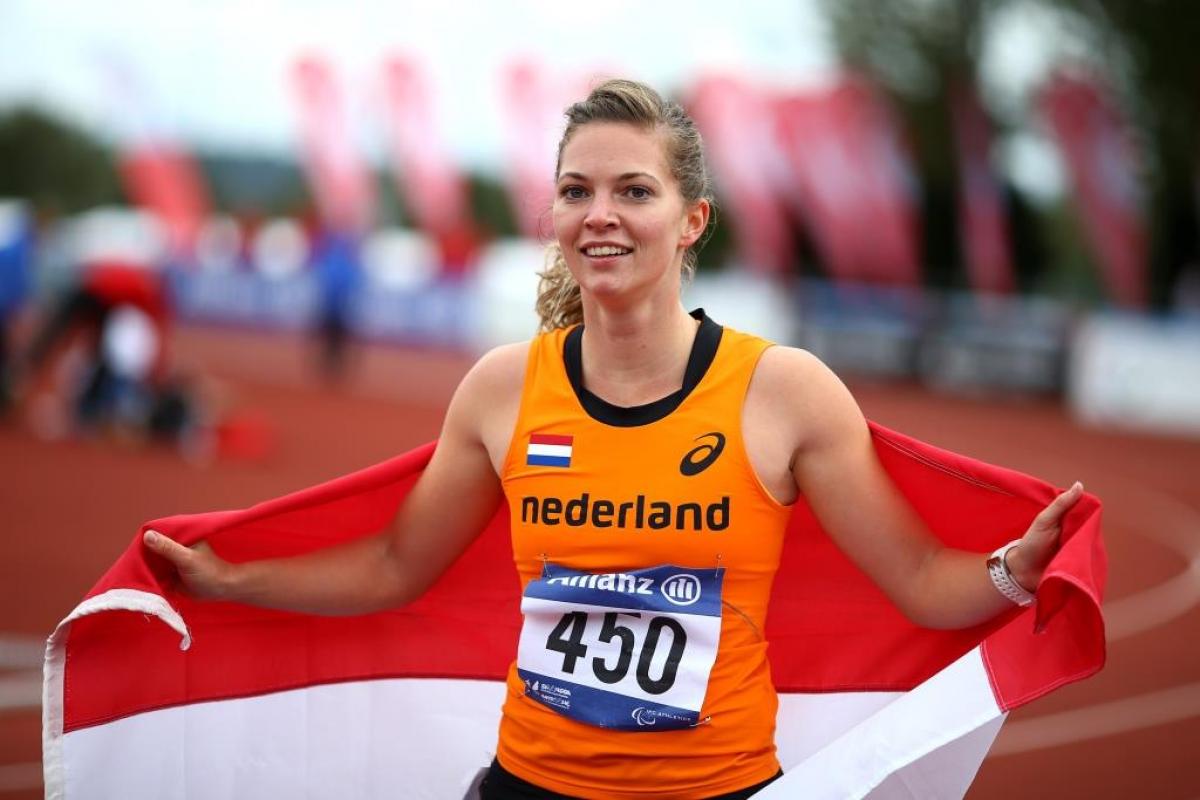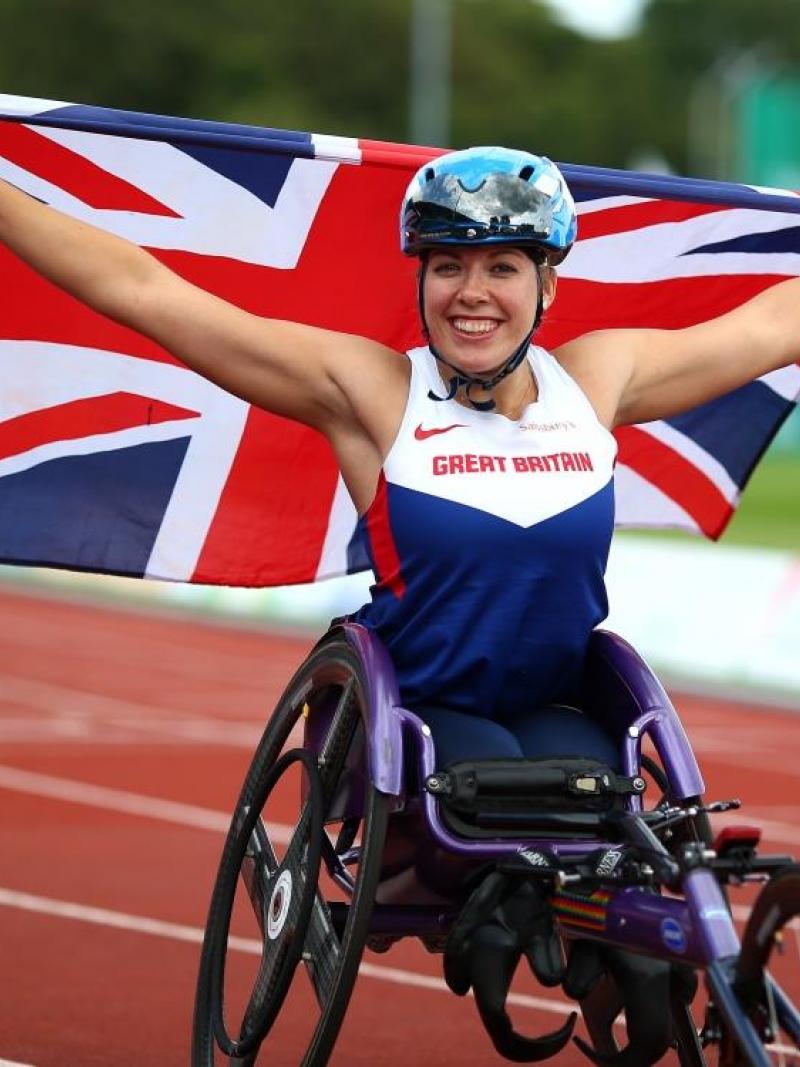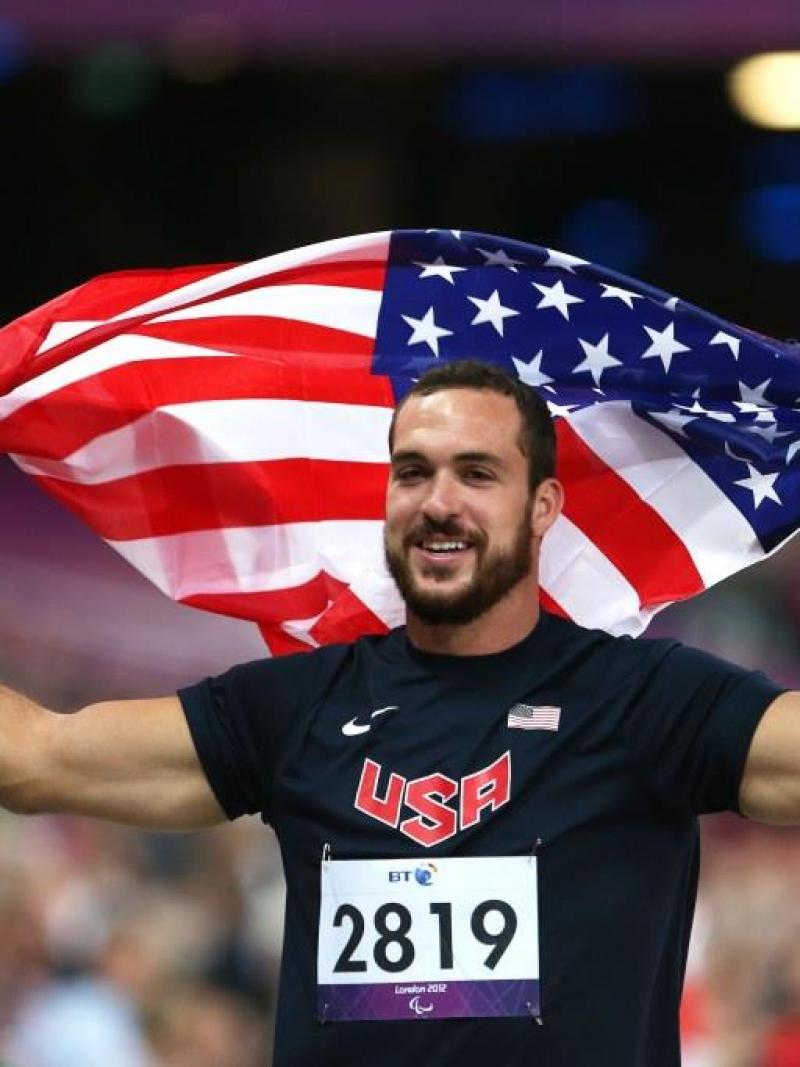How I got into sport: Marlou van Rhijn
The Dutch blade runner gives an insight into how she started out as a swimmer and developed into a world and Paralympic champion sprinter. 22 Jul 2015
Marlou van Rhijn celebrates after winning the womens 200m T44 final at the IPC Athletics European Championships at Swansea.
Dutch sprinter Marlou van Rhijn takes to the track at the IPC Athletics Grand Prix Final in London, Great Britain, this Sunday (26 July) – part of the Sainsbury’s Anniversary Games taking place at the city’s Olympic Park venue.
The reigning 100m and 200m T44 world champion takes on the shorter sprint in the British capital – on the same track where she clinched Paralympic silver and gold three years ago.
The 23-year-old holds the world records in both distances – in fact, she has broken her own 100m world records twice already this year. Here, Van Rhijn describes the journey that has led her to become one of the world’s fastest female Paralympians.
How I got into sport
I first was a swimmer. The simple reason was that when I was 12-years-old, I got a little chubby. My mum said maybe I should try a sport, so first I tried basketball, then I got in to swimming. My dad was a swimmer as well and he drove me everywhere - I started in a special group for disabled swimmers, but that was about an hour’s drive away. So after that I entered a team in my home town, Purmerend.
I swam quite seriously until I was 18 - I did a World Championships too, and finished 19th - I was actually very pleased about that result because I finished in the top 20. People like Inge de Bruijn, a former Dutch Olympic swimmer, she was my role model. She was this babe in the pool, with long nails, and she just looked so cool. When I saw her I thought ‘I want medals like that’. In Holland swimming is a popular sport that we are very good at, so seeing all those Dutch athletes win was very inspiring.
But then I quit, because I was studying at the time and I really just wanted to be a student. From 12 to 18-years-old I just went to the swimming pool, to school, and back to the swimming pool – that was my whole life. I wanted to go out at night, and do normal stuff, and be a student.
Half a year later I got a call from my athletics federation asking me if I wanted to try out. I did, and when I got my blades I was hooked. I had never felt that sense of speed before. Swimming is fun but it’s not that fast. Now with the blades, when I wanted to run, I actually did run. I needed to learn how to control my blades, to go the right way instead of all over the track, and it just felt like a very cool challenge.
It was in late 2010 when I got my blades, then the Dutch team had the World Championships in early 2011 and I remember when they came back that they were all working towards London 2012. I always had wanted to go to the London Games, even when I was a swimmer. So when I got the chance to at least train for it, I grabbed it with both hands. I dropped out of school for a year and did nothing else.
Because I knew how it was to be a full time athlete from swimming, it all came together when I got my blades. I knew I was competitive already, but I also felt the sense of speed, so when that came together I knew it was what I wanted to do.
I remember the test event for London 2012 - that is where I qualified for the Games. But the European Championships in 2012 was my first international event. My true competitors I met in London though. I had never really raced them before - maybe a couple of times - but London was my first truly major competition.
Now I see it as important to help others become involved. You can start athletics just on your normal prosthetics, but for me I really wanted to join athletics when I got my blades. Together with Ottobock, the Johan Cruyff Foundation, and Frank Jol I have this whole team - we are starting to come up with a system where you can more easily try to run on blades. I think you have to try it first before you know how fast it is. For children it’s good for gym class too – I think it’s more important that it’s more accessible.
What I have achieved hasn’t really sunk in. There are bad days when you don’t want to go to practise, or your competition didn’t go so well. But you can’t really be upset because this is your job and you get to do this; to race other people. And when I do win, and race times that I didn’t imagine were possible, I definitely look back and think okay, it’s awesome that this is my job!
Marlou van Rhijn will line-up in the 100m T44 at the Sainsbury’s Anniversary Games on Sunday 26 July before getting ready to compete in October’s World Championships in Doha, Qatar.

 Facebook
Facebook
 Instagram
Instagram
 Twitter
Twitter
 Youtube
Youtube


